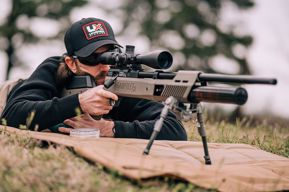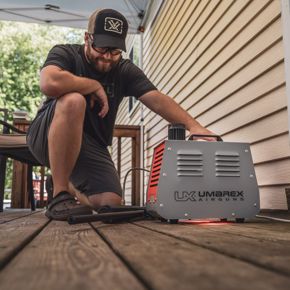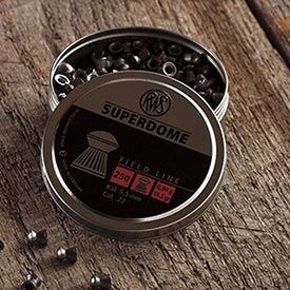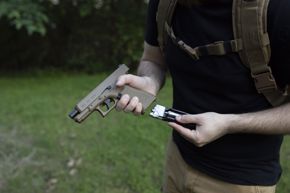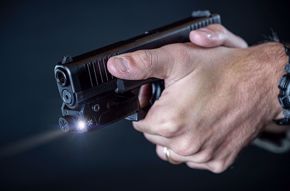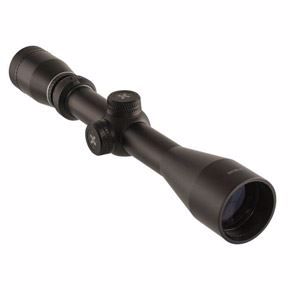What’s catching on faster than inflation and global instability? Pre-Charged Pneumatic airguns are! Okay, that may have been a terrible comparison to start out a blog on airguns but two things are for sure, 2021 has brought on some deep changes to the social fabric and PCP air rifles are flying off the shelves and into the hands of all kinds of airgun shooters. The reasons are plenty but can be summed up with some degree of accuracy by saying PCPs are fun to shoot, easy to shoot, and crazy accurate.
So if you are contemplating a PCP for the first time or have recently picked up a Gauntlet or Origin PCP, there are some important things to take stock of so you can maximize your experience with the PCP air rifle.
The Difference Between Gunpowder and Air Power
PCP air guns do the same thing any other gun does, i.e. launch a projectile at the input of a shooter. As opposed to traditional spring or gas piston-style air rifles, the PCP uses an onboard air storage tank to “fuel” the projectile. With any rifle, some form of stored energy is released to do this. With firearms, the energy stored in some magic dust does the trick. Traditional spring-type air guns release energy stored in a heavy spring that rapidly compresses the air charge behind a pellet. But with PCPs, a great deal of energy, respectively speaking, is stored in a tank that is released in small amounts for each shot.
This difference sets PCPs apart from traditional air rifles in a number of ways. One notable way is that the work of charging up the tank can be done in a variety of ways and separate from the shooting process altogether. Another notable difference is that a shooter can quickly reload for a follow-up shot without doing a whole lot of work. The last difference that needs to be discussed is how little recoil is generated via the shot. PCPs are virtually recoil-free. Yes, there is a tiny bit of recoil, but it is so insignificant that a shooter really doesn’t notice it. The proof? PCPs are legendary for how accurate they can be.
Gear You Need to Get Started With PCP Air Rifles
The price that has to be paid for supreme accuracy that a PCP affords is pressurizing air to an extremely high pressure, typically north of 3,000 PSI. To pressurize air to this pressure territory takes special equipment. The most economical and labor-intensive method to do this is with an airgun hand-pump. Typically a hand-pump is visually similar to a bicycle pump, only much more robust in its construction. These pumps compress a small amount of air to the high pressure needed to fill the PCP gun’s tank. Yes, it does take a while to pump up an air rifle’s tank. A smaller tank might take as many as 300 strokes to fill and a larger tank over 600 strokes! This is a serious commitment of time and effort for the shooter. One end-run around this method is found in the Umarex Origin’s Ever-Pressure Tank System. This special air tank uses some special voodoo to maximize the volume of air in the tank so that a shooter can reach full pressure much sooner-- 13 pumps for a single shot and 100 pumps for a fully charged tank. If you are ready to forget about that hand pumping and the sweat equity involved with it you may be ready to explore portable electric or pony bottles.
Portable electric pumps like the ReadyAir PCP pump simply plug into a 110v AC outlet or clamp onto a 12v DC power source and go to work while you sip some coffee. The beauty of the ReadyAir is that it is a maintenance-free design. There is no oil or water cooling within the pump. Just turn it on and the appropriate fans will kick on and begin the fill. There is a sensor within the circuitry that will shut off the motor if it gets too hot, thus protecting your investment. In a matter of minutes, the rifle’s tank will be topped off and ready for action.
If you are shooting with several other PCP shooters or are using an air-hungry big bore PCP rifle like the Hammer, you may find the portable electric pump a little too slow for your taste. This is where investing in a carbon fiber high-pressure tank like those sold by Joe Brancato on his website. These tanks combine a huge volume of air with the required high fill pressure needed to help keep air rifle’s tanks topped off. However, big air at that pressure is not easy to come by. The cost of a pump capable of filling a 90 CF bottle is typically in the triple digits on the low end. Commercial grade pumps used by dive shops can get exceedingly expensive.
There are some PCP filling stations popping up as the PCP craze continues. Some dive shops may be able to fill tanks to the required pressure, but it is best to call ahead and see if they can before driving to the shop.
You will likely discover that a certain pellet works really well in your PCP. The smart money will stick to what works in the ammo department. As with most things, the middle ground is where the most selection and best performance can be had. Extremely lightweight pellets tend not to be great with accuracy and extremely heavy pellets and/or slugs can lead to disappointing performance as well. If in doubt, ask some shooters who have the same rifle what they are shooting in and start your ammo selection process from there.
Tips and Tricks for PCP Performance
Whether you are using a hand-pump, portable electric, or high-pressure bottle to fill from, it is best to fill more often than to run the gun’s tank way down before topping it off. The reason is it helps make the best use of the air in the gun’s tank and the energy and time required from your pumping source. I’ve found that shooting two magazines from my first-generation Gauntlet followed by about 40 pumps on my Super Fill Hand Pump is a great recipe for shooting while keeping the pumping to a minimum. If I shoot until the bottle pressure goes below the regulator output, it is more like 170 pumps, and all of a sudden I don’t feel like shooting anymore.
With the ReadyAir, it’s all about fill time. The more air that remains in the bottle, the less time it will take to fill the gun’s tank up. If you are shooting from a big bottle, this technique will use less air-- the longer the fill tank stays above the max fill pressure of your rifle’s bottle, the more shots you will ultimately get from the air in the fill tank.
One of the nice things about life with a PCP rifle is that there is no need to empty the air tank for storage. Thankfully the valve systems are robust enough to withstand the extreme pressure for long periods of time. Traditional air rifles and CO2-powered airguns do not enjoy this liberty. Most PCP air rifles are customizable in various ways. Of course, you can install various optics and accessories on them, but some models are friendly for “tuning”. Airgun experts like Hajimoto have the knowledge and parts to really soup-up a rifle like the Gauntlet for whatever style of shooting performance you prefer.
Conclusion
Are we on the crest of a new wave in airgunning? I would have to say, “yes”. Yes, there is still a place for traditional spring-powered air rifles, but the advanced shooter and the shooter looking to step up to the next level PCPs are where the action is. The power and accuracy potential in this branch of air guns is not a gimmick, and it is not going away.
Mark Davis, avid outdoorsman, family man, and outdoors writer is the social media specialist for Umarex USA.


